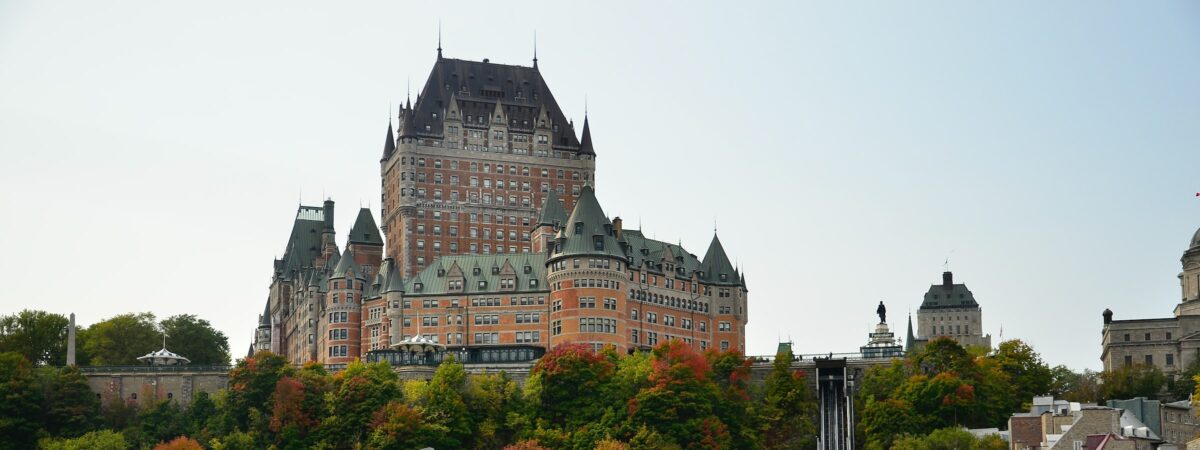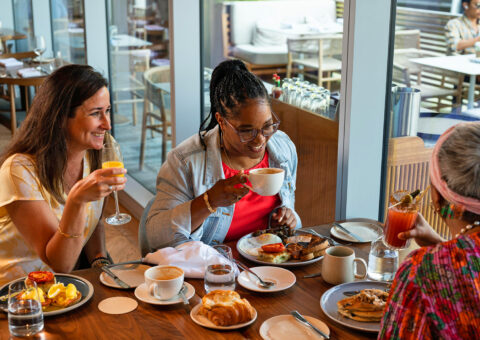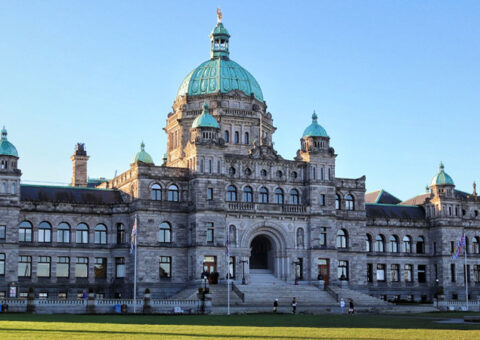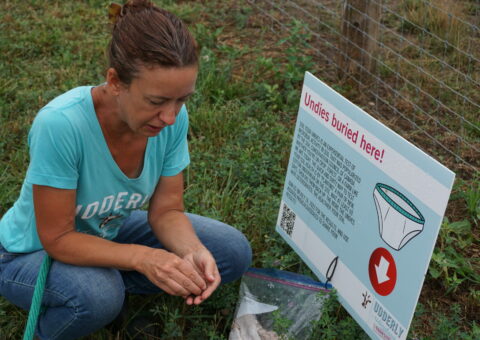Quebec City, Canada, started as a French colony in 1608 and remained French until 1759, when a 15-minute battle against the English changed the city’s (and province’s) fate. The architecture is a mixture of 18th- and 19th-century French and English styles, and there are plenty of stairs and hills for getting into shape while walking around.
The award-winning food scene rivals Montreal, and local artisans and producers are integral parts of the culture. Take a look around with local expert Pamela MacNaughtan, as she introduces the greatest hits of Quebec City, a capital city with a big village vibe.
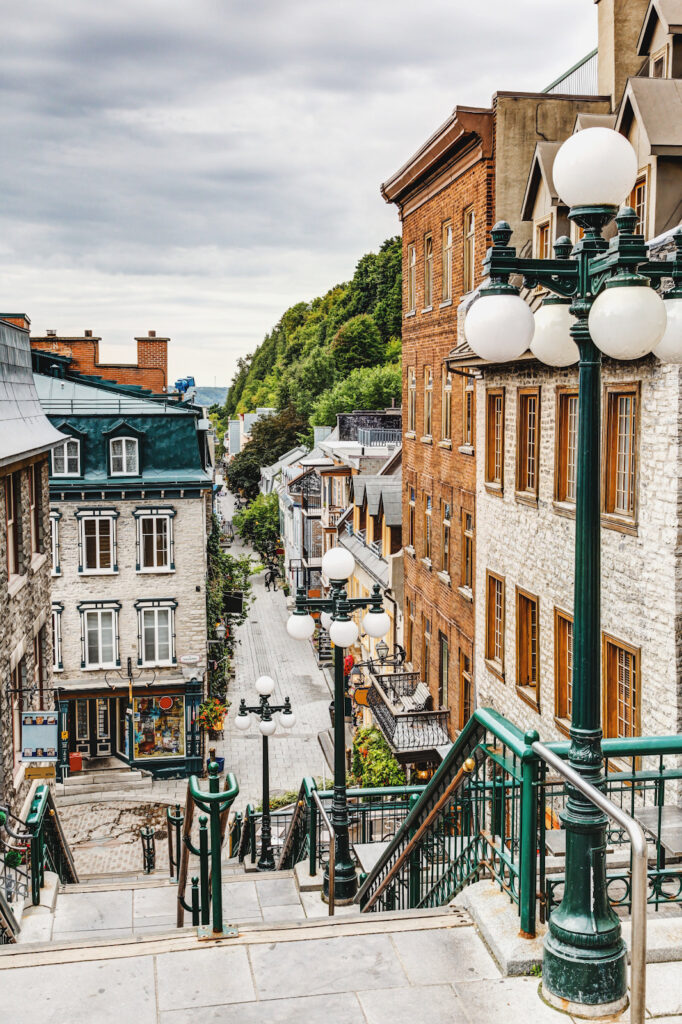
Upon Arrival
After a visitor arrives in my city, I always recommend going straight to Old Quebec, which is one of the main reasons why everyone comes to Quebec City. Walk on the cobblestone streets of Petit-Champlain and Place-Royale. Spend time on Dufferin Terrace gazing at Château Frontenac and the Saint-Lawrence River, or watch local performers. Admire French and English architecture, and take time to enjoy a café or beer on a patio.
The best time to be here is autumn, closer to late September. That’s when the foliage turns from green to golden yellow, rusty orange, and ruby red. The days are warm, and relaxing on a patio with a beer or café is still a popular activity. It’s also a time when kids are back in school and the crush of summer tourism thins, allowing for cosy personal time with this historic Canadian city.
I tell first-time travelers to go to Terrasse Pierre-Dugua-de-mons for one of the best views of Old Quebec and the Saint-Lawrence River. I also tell them to avoid streets like rues Saint-Jean and Saint-Louis, which see heavy tourist foot traffic during the day, usually from 10:00 a.m. to 4:00 p.m. during the high season (summer, autumn, and the last two weeks of December).
People from here know better than to be anywhere near Old Quebec on holiday long weekends, when the area swells significantly with tourists. Instead, they would rather spend time in residential neighbourhoods such as Saint-Roch, Limoilou, Saint-Jean-Baptiste, or Montcalm.
The best museum to start your journey and get a good sense of this city is Musée de la civilisation in the Old Port neighbourhood, where the This Is Our Story exhibit walks visitors through the Indigenous and First Nations peoples history in Quebec. Spend some time learning about the life they had before the arrival of the Europeans, 400 years of colonialism, what decolonisation looks like, and their current reality.
Parents should take their kids to Artillery Park and the fortifications walls. Old Quebec is the only remaining fortified city north of Mexico, and you’ll see several canons along the fortification walls. Take a guided tour with Parks Canada to learn about the city’s defences during the early days, and see the old city from atop the old gates at rue Saint-Jean and rue Saint-Louis.
Food from the Heart
Among the food (or dishes) my city is most proud of, poutine is an absolute must. Poutine is fries and fresh squeaky cheese curds smothered in a hot brown sauce (a gravy that is often a mixture of beef and chicken gravies). It’s a classic Québécois dish, and a must-try. I like to go to Snack Bar St Jean or Casse-croûte Chez Gaston to really enjoy it.
When we get together to celebrate, wine or beer, usually made in Quebec, is what people here traditionally drink. I like to gather my friends and go to Pub l’Oncle Antoine in Place-Royale for a round. It’s inside an 18th-century building, in what was once the stone storage room of the first female-owned business in Quebec City.
When I eat completely local, I will go to Le Fin Gourmet restaurant. I know the food here is made with fresh, locally sourced ingredients, and the menu changes based on what is seasonally available. I love the relationship many of the local restaurants have with farmers and producers in the region.
Another two classic, iconic restaurants include Buffet de l’Antiquaire, a 40+ year old diner known for serving Québécois comfort foods. And Patente et Machin, located in the neighbourhood of Saint-Sô and known for its sweetbreads and French cuisine, is an unforgettable dining experience.
The parts of town where locals come for traditional food are the neighbourhoods of Saint-Roch and Saint-Sô. This is where restaurants are led by passionate chefs who believe in supporting local producers. This marriage between chef and producer is at the core of local cuisine, and I highly recommend going to Le Pied Bleu, l’Affaire est Ketchup, or Le 101.
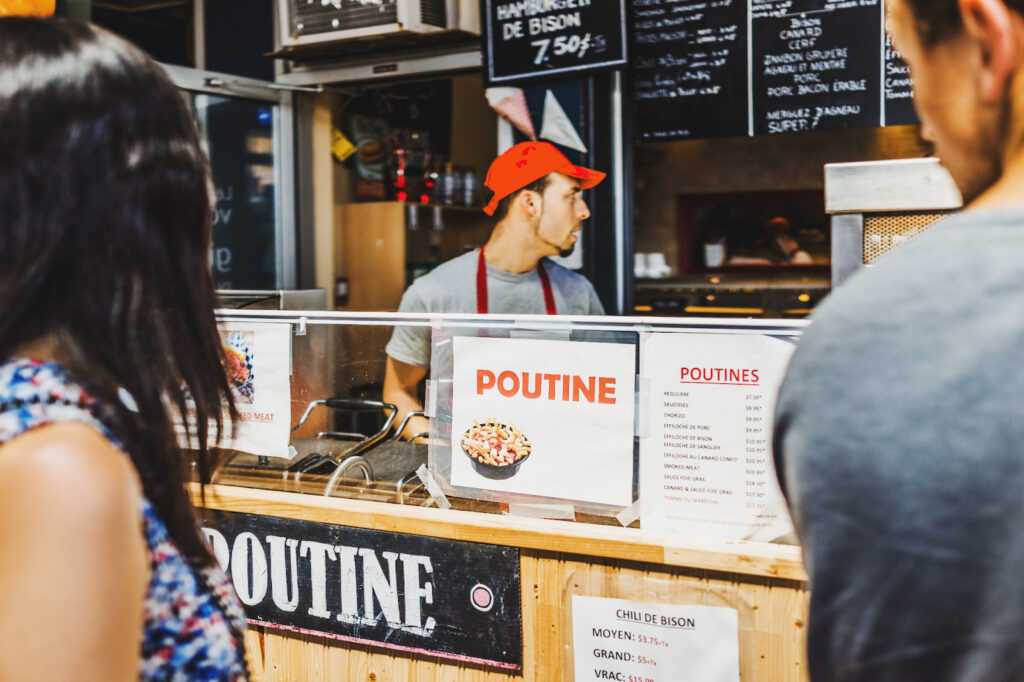
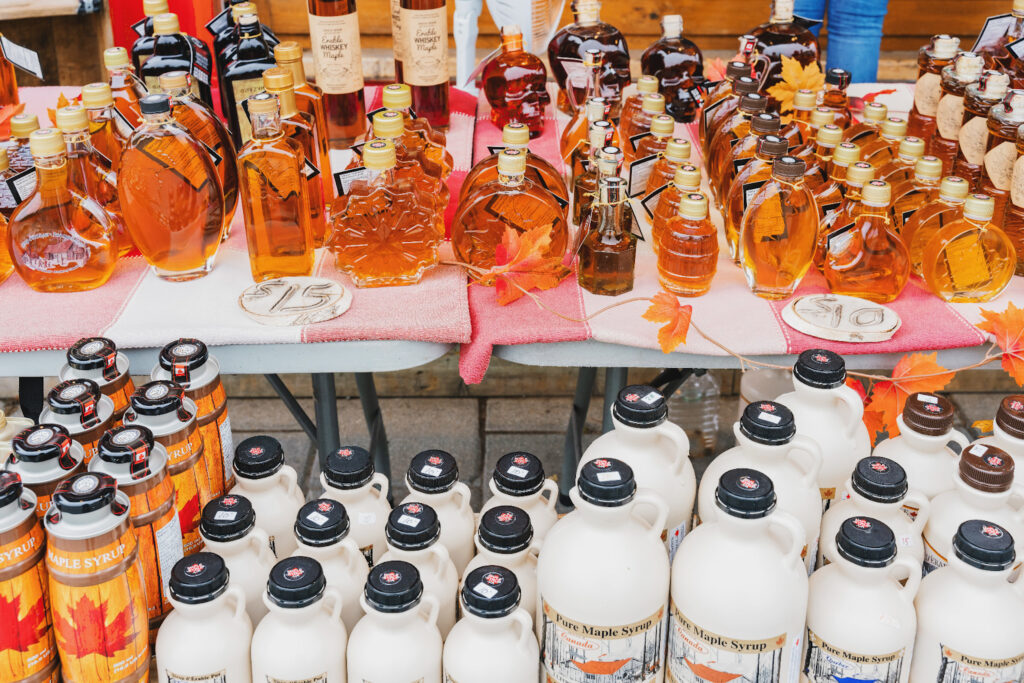
Shopping Locally
My city is known for making beer and maple syrup. It also grows some of the juiciest strawberries.
The best market in Quebec City is Le Grand Marché. I recommend people visit this market because it’s one of the best places to shop for products made by local farmers and artisans. In summer, the market is a popular spot with local events, and the lawns are a nice place to relax and nibble on your purchases. In winter, Le Grand Marché has a wonderful Christmas market.
I always take visitors to shops in Saint-Roch or Limoilou to buy real, local souvenirs. The products are a mixture of handicrafts, gourmet foodstuffs, and local fashion brands, and the vibe is relaxed and gives a peek into local life in Quebec City. And we know to avoid rue du Petit-Champlain on summer afternoons because the crush of tourists can be overwhelming.
Getting Deeper Into Quebec City
A great book to learn more about my city is “Patrician Families and the Making of Quebec: The Taschereaus and McCords” by Brian Young.
Most people know about Château Frontenac because it’s one of the most photographed buildings in Canada. A châteauesque-style hotel, it was built by the Canadian Pacific Railway and opened in 1893. It has hosted celebrities and dignitaries from around the world, and there are suites dedicated to Alfred Hitchock and Celine Dion, but Le Monastère des Augustines should also be visited because this is where Quebec’s medical history begins. The Augustine nuns arrived in 1639 and established the first hospital, which is attached to the monastery. Today, Le Monastère is a health and wellness retreat, with a fascinating museum that is open to everyone.
My city is a place people are attracted to because of its 400+ years of history and European vibes — thanks to its 18th- and 19th-century French and British architecture, history, and cultural influences.
To really celebrate my city at its best, come during the summer when the city is humming with activity: a 11-day music festival featuring world famous artists, the New France Festival, and fireworks shows on weekends in August. Enjoy street performers, outdoor public art walks, patios, and more. The city is truly electrifying in summer.
Most people think of my city as a place to spend a day or two before moving on to Montréal, but really this is a destination to spend four or five days diving into the history, food, and culture of the city. Quebec City has an award-winning food scene, and Old Quebec’s European vibes can fool most into thinking they’re not in Canada.
This is one of the best places in the world to experience Québécois cuisine. Locals are proud of that because they have such a deep love for locally made products. Knowing where one’s food comes from and how to best utilise those ingredients is a point of pride. Like a vegan, Québécers are always excited to share Quebec products with visitors.
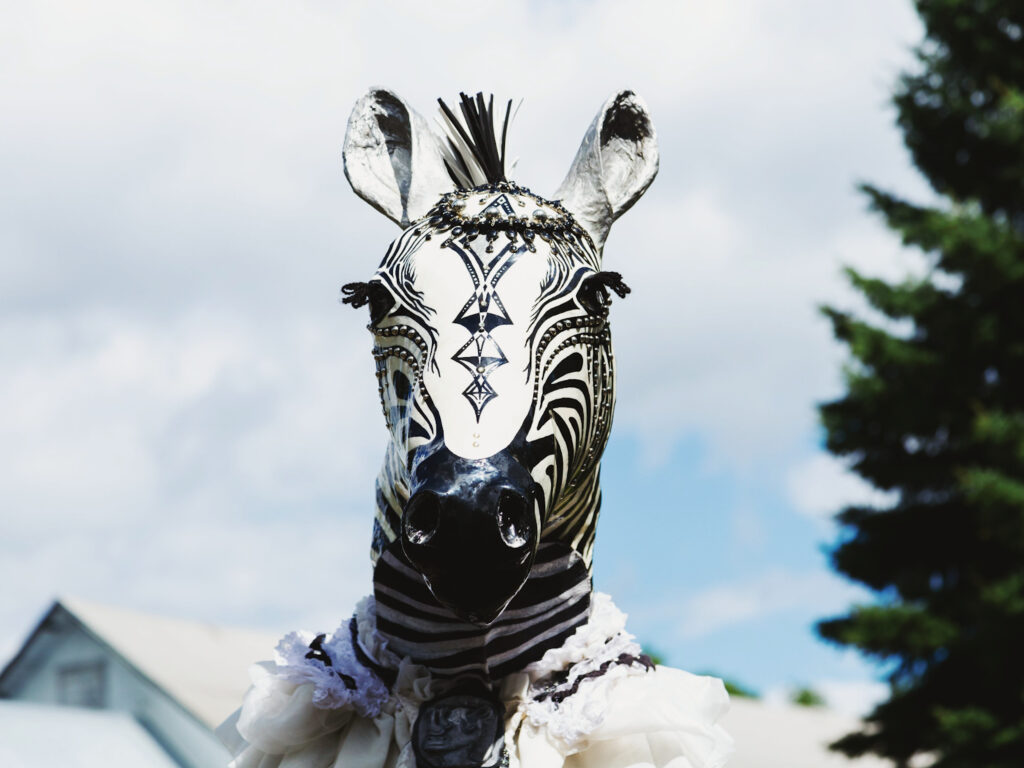
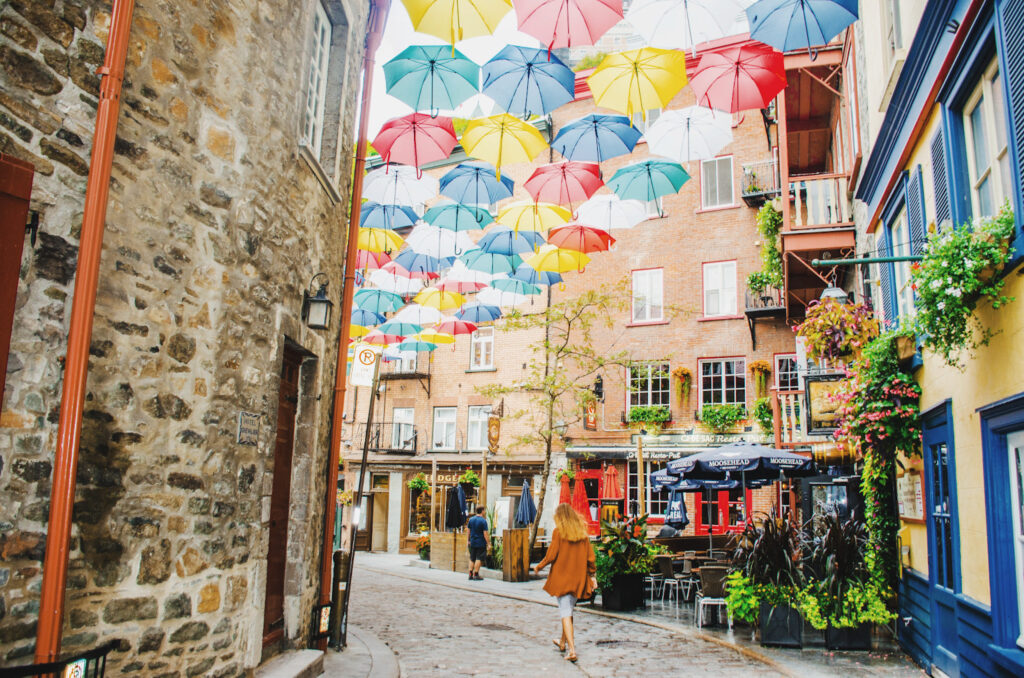
Getting Around Quebec City
One thing you should know about getting around my city is that having a car can be cumbersome. Parking, particularly in Old Quebec, is challenging. If you’re driving to Quebec City, leave your car at the hotel or in a parking garage and get around on foot or by public transport.
The best way to travel in my city to have as little impact as possible is on foot. Quebec City is a very walkable city, and I highly recommend ditching your car and exploring on foot instead. Old Quebec has a lot of hills, and, in winter, wearing ice cleats helps to keep pedestrians upright.
Luckily this method of transportation also allows me to duck down quiet streets and small alleys, and onto streets that become pedestrian-only during weekends in summer. Walking is truly the best way to experience Quebec City.
Outside The City
To get away and into the outdoors, I like to go to the Charlevoix region, among the Laurentian mountains, hiking trails, small lakes, and charming villages. It doesn’t matter what time of year you visit, there is always something to see and do in Charlevoix. It is exceptionally beautiful in autumn.
For a day trip just beyond my city, I like to visit Île d’Orléans. A small island 17 kilometres (10.56 miles) from Olf Quebec, Île d’Orléans is home to quaint villages with centuries-old ancestral homes, wineries, succulent restaurants, juicy strawberries in summer, and sugar shacks in spring. This was a favourite escape of Quebec folk singer Félix Leclerc, and there is a museum here dedicated to his life and work.
Many people will head to Île d’Orléans, but locals know to go to Parc national de la Jacques Cartier, a glacial valley 30 minutes from Quebec City. Fat biking and hiking are popular pastimes, but the park is also perfect for canoeing and fishing. In winter, strap on some snowshoes or skis and hit the trails. Snow tubing and kicksledding are also quite fun.
I really enjoy the view of my city from Lévis, which is across the Saint-Lawrence River. It’s a 15-minute ferry ride, and the view of the Quebec City skyline is spectacular, especially in autumn or after a fresh snowfall.
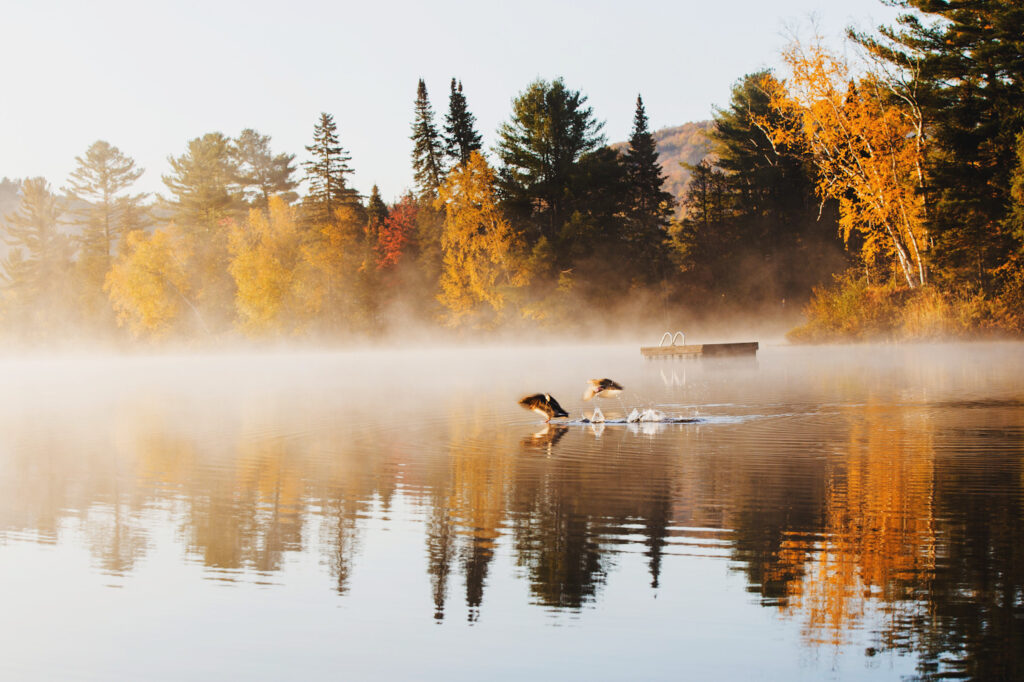

Connecting with Locals
When I want to have fun and celebrate being out in my city, I go to the Saint-Roch neighbourhood, where some of my favourite restaurants, microbreweries, and bars can be found. It’s a trendy neighbourhood and my go-to escape when life in Old Quebec (where I live) becomes too intense.
To hang out with my friends and go to a real insider spot, I go to Macfly Bar-Arcade where I go back in time and play hours of old school arcade games and pinball, devour grilled cheese sandwiches, and drink more than a couple of pints of beer. Playing arcade games until 3:00 a.m. is always a good idea.
The best resource for finding out what’s going on around town is the Quebec City Tourism website. It is truly one of the best tourism board websites and very user friendly.
When I want to enjoy my city without spending much (or any) money, I pick up some Quebec terroir and have an impromptu picnic in a small park or one of the city’s ephemeral pop-up spaces. Every neighbourhood has outdoor patios and public spaces that encourage locals to gather outdoors and enjoy the warm weather.
Bar Le Sacrilège is my first choice for music because it’s an eclectic bar with cheap beer and great local bands. And when I feel like dancing, I go to Le Drague for the drag shows, multiple dance floors, and delicious cocktails. Everyone is welcome, and in summer there are often lines to get in. Its Facebook page is the best place to learn about events like drag shows and drag brunch.
Finding Solitude in Quebec City
When I want to go somewhere to sit and meditate about my incredible city, I go to Place des Canotiers along the Saint-Lawrence River. The park has a view of the port, as well as Old Quebec. On a hot day, walking through spouts of mist or dancing water fountains is a fun way to cool off.
If I chose the one place that makes me most proud of my city, it would have to be Maison de la littérature because of its dedication to the preservation of French literature. This gorgeous library is housed in a former church with glassy modern additions. It’s one of my favourite places to relax, read, and write.
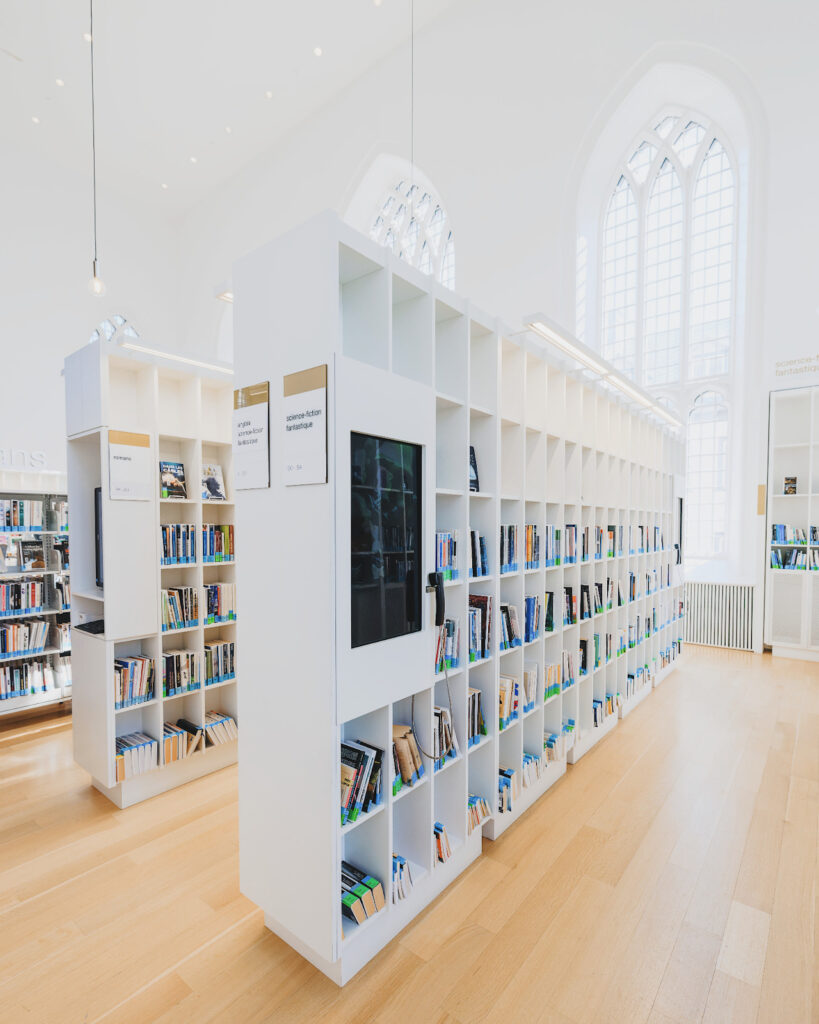
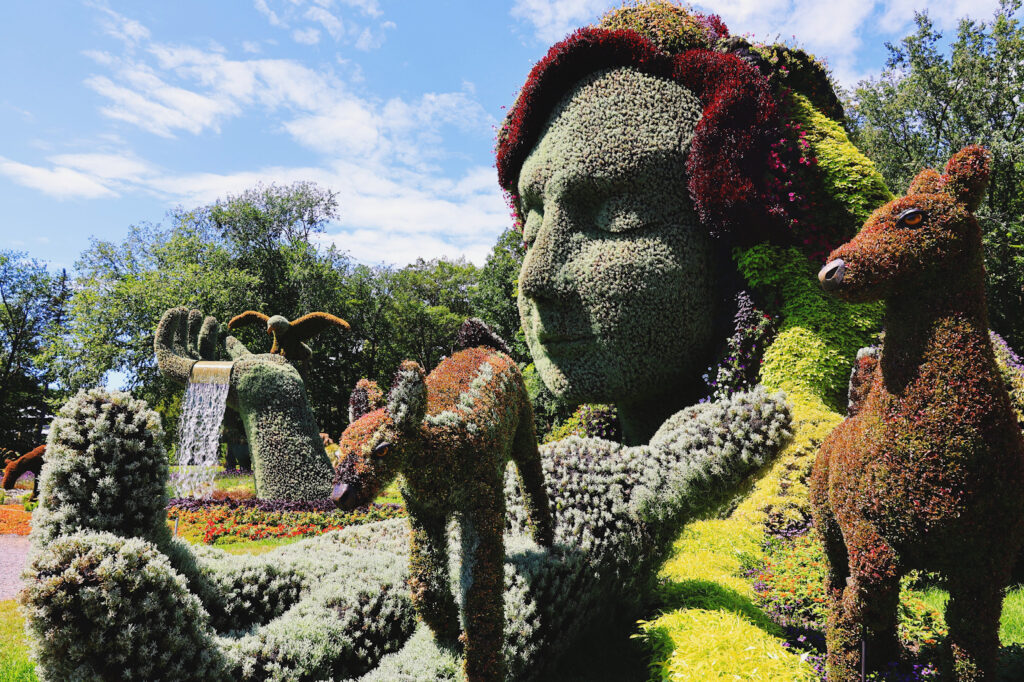
When the Seasons Change, This City Shines
Spring (April to June) is the best time to experience Quebec’s sugar shack culture: sitting at long tables listening to folk music and feasting on traditional foods like tourtière, baked beans, fluffy eggs, and pea soup, all with a healthy dose of maple syrup. Spring is also the low season, and an excellent time to enjoy the city while it is relatively quiet.
I always recommend visitors explore Quebec City’s public art in the summer (June to September) because it’s an interactive way to see the city. In 2022, Ai Wei Wei was among the artists participating in Passages Insolites, one of the most famous artists to participate thus far.
The fall (September to November) here is magical when you embrace the outdoors and find ways to commune with nature. During the height of autumn the foliage is stunning, creating a vibrant backdrop for the city. The days are still warm, with cool breezes, which are welcome after a very humid summer.
The winter (November to April) is a great time to learn to love winter. Old Quebec turns into a living Christmas card as snow clings to trees and sloping roofs. The Ice Hotel opens up in January, and Carnaval de Québec (in February) is a great way to celebrate winter.

